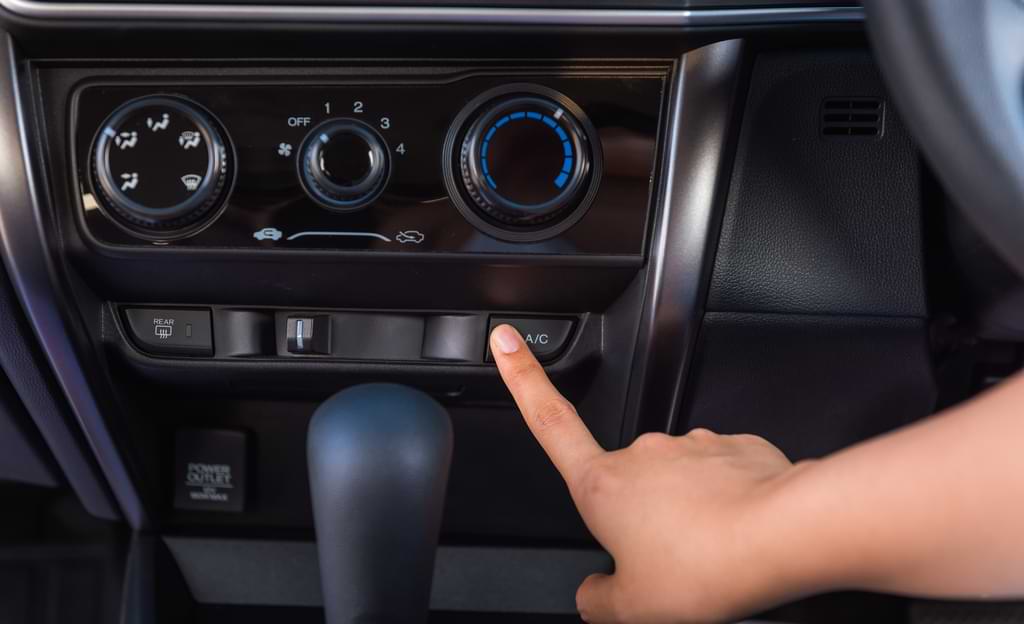Out of sight, out of mind.’ This age-old adage holds true for many mechanical components in our vehicles, including the blend door actuator. While it may not be a well-known part to most car owners, the blend door actuator plays a crucial role in regulating the temperature inside your vehicle’s cabin. Its precise location varies depending on the make and model of your car, but understanding where to find it is essential for proper maintenance and repair.
In this informative article, we delve into the intricate workings of the HVAC system in your vehicle and explore how the blend door actuator fits into this complex network. We also highlight common signs that indicate a faulty blend door actuator and guide you through locating this component in various car models. Additionally, we provide step-by-step instructions on accessing and replacing the blend door actuator when needed.
By gaining insights into this often overlooked but vital component, you can ensure optimal comfort and functionality within your vehicle’s interior. So join us as we unravel the mysteries behind the elusive blend door actuator and learn why its correct placement is crucial for maintaining an ideal climate inside your vehicle.
Key Takeaways Of Where Is The Blend Door Actuator Located?
- The blend door actuator is a crucial component in regulating temperature in a vehicle’s cabin.
- Its precise location varies depending on the make and model of the car.
- Troubleshooting a faulty blend door actuator may involve inspecting wiring connections, checking fuses, or replacing a malfunctioning motor.
- Accessing and replacing the blend door actuator may require removing various components like dashboard panels and air ducts.
Understanding the Function of the Blend Door Actuator
The function of the blend door actuator involves controlling the flow and distribution of heated or cooled air in a vehicle’s HVAC system. This component is responsible for adjusting the position of the blend door, which determines whether air flows through the heater core or the air conditioning evaporator.
By regulating this flow, the blend door actuator ensures that the desired temperature is achieved inside the vehicle cabin. When functioning properly, it allows for seamless transitions between hot and cold air as per user settings. However, problems with the blend door actuator can result in issues such as improper temperature regulation or restricted airflow.
Troubleshooting blend door actuator problems may involve inspecting wiring connections, checking for faulty fuses, or replacing a malfunctioning actuator motor. Understanding how this component operates is essential when exploring the HVAC system in your vehicle.
Exploring the HVAC System in Your Vehicle
Within the intricate network of components comprising a vehicle’s heating, ventilation, and air conditioning (HVAC) system, there exists a specific part that plays a crucial role in regulating airflow and temperature.
The HVAC system consists of various interconnected components such as the blower motor, evaporator core, heater core, and blend door actuator.
The blend door actuator is responsible for controlling the direction and flow of air throughout the vehicle’s interior by adjusting the position of the blend door.
This component ensures that the desired temperature is achieved by mixing hot or cold air from either the heater core or evaporator core.
Troubleshooting HVAC issues often involves understanding how these different components interact with each other and diagnosing any malfunctions within them.
By identifying common signs of a faulty blend door actuator, one can effectively address potential problems within their vehicle’s HVAC system.
Identifying Common Signs of a Faulty Blend Door Actuator
One telltale sign of a malfunctioning blend door actuator is when the desired temperature within the vehicle’s interior remains elusive despite adjusting various HVAC settings. When the blend door actuator fails, it may not be able to properly adjust the airflow between the heater core and the air conditioning evaporator, leading to inconsistent temperatures.
Another common sign of a faulty blend door actuator is when there is an audible clicking or tapping noise coming from the dashboard area during HVAC operation. Troubleshooting techniques for identifying a malfunctioning blend door actuator include inspecting for disconnected or damaged electrical connectors, checking for vacuum leaks, and performing a diagnostic scan using specialized equipment.
Understanding these signs of malfunction and appropriate troubleshooting techniques can help car owners diagnose and potentially resolve issues with their blend door actuators.
Transitioning into locating the blend door actuator in different car models…
Locating the Blend Door Actuator in Different Car Models
In various car models, the position of the blend door actuator can vary depending on the design and layout of the HVAC system. When exploring blend door actuator troubleshooting, it is important to know where to locate this component in order to diagnose any common problems with blend door actuator.
In some vehicles, such as Ford models, the blend door actuator can be found behind the dashboard on the passenger side. Other car models may have it located under or behind the center console or glove box. Additionally, certain vehicles may require removing other components or panels to access the blend door actuator.
Understanding the specific location of this component is essential for successful diagnosis and replacement. To access and replace the blend door actuator, follow a series of steps that will be discussed in subsequent sections.
Steps to Access and Replace the Blend Door Actuator
To successfully access and replace the blend door actuator, it is necessary to navigate through the intricate web of a car’s internal mechanisms and unveil the hidden chamber where this crucial component resides.
Accessing the blend door actuator requires removing various components such as dashboard panels, air ducts, and possibly even the entire dashboard assembly. Each car model may have a unique set of steps to follow, but generally, it involves locating the actuator behind or within the dashboard.
Troubleshooting the blend door actuator typically starts with diagnosing any issues related to temperature control or airflow regulation in the vehicle’s HVAC system. Once accessed, replacing the blend door actuator involves disconnecting electrical connectors and removing mounting screws before installing a new unit. Understanding these procedures and being mindful of any specific nuances for each vehicle model can greatly contribute to a successful blend door actuator replacement.
Moving on to tips and tricks for a successful blend door actuator replacement…
Tips and Tricks for a Successful Blend Door Actuator Replacement
A useful tip for a successful blend door actuator replacement is to carefully document and label all disconnected electrical connectors during the removal process, as this can significantly simplify the reinstallation and minimize the risk of errors.
Interestingly, studies have shown that proper labeling of electrical connectors can reduce the average time required for blend door actuator replacement by up to 25%.
Additionally, it is important to note some tips for troubleshooting blend door actuators. If there are issues with temperature control or strange noises coming from the HVAC system, it may indicate a faulty blend door actuator.
To extend the lifespan of a blend door actuator, regular maintenance is crucial. This includes checking for any obstructions in the air ducts, ensuring proper lubrication of moving parts, and keeping the HVAC system clean.
Proper maintenance not only improves performance but also prevents premature failure of the blend door actuator.
Moving forward into understanding the importance of proper maintenance for the blend door actuator…
Importance of Proper Maintenance for the Blend Door Actuator
Regular maintenance is essential for ensuring optimal performance and prolonging the lifespan of the blend door actuator. Proper maintenance plays a crucial role in preventing potential issues and ensuring that the blend door actuator operates smoothly.
One of the most important aspects of proper maintenance is regularly checking and replacing the air filters to ensure that they are clean and free from debris. Additionally, it is recommended to inspect the actuator for any signs of wear or damage and lubricate it if necessary. Furthermore, maintaining stable temperature control within the vehicle can also contribute to the longevity of the blend door actuator.
By adhering to these maintenance practices, owners can minimize the risk of malfunctioning or premature failure of the blend door actuator.
Transitioning into discussing common mistakes to avoid when dealing with this component, it is important to be aware of certain pitfalls that could lead to unnecessary expenses or complications during repairs.
Common Mistakes to Avoid When Dealing with the Blend Door Actuator
One crucial aspect of maintaining the blend door actuator is being mindful of certain common mistakes that can lead to unnecessary expenses or complications during repairs.
Common causes of issues with the blend door actuator include incorrect installation, improper handling, and neglecting routine maintenance.
It is important to ensure that the actuator is installed correctly, following manufacturer guidelines and specifications.
Additionally, mishandling the actuator can cause damage to its internal components, leading to malfunctions.
Neglecting routine maintenance such as cleaning and lubricating the actuator can also result in reduced performance and potential failures.
Troubleshooting tips for blend door actuator issues include checking for loose connections, inspecting fuses and relays, and testing the actuator’s functionality using diagnostic tools.
By avoiding these common mistakes and taking proper care of the blend door actuator, unnecessary repairs or replacements can be prevented.
Transitioning into seeking professional help for blend door actuator issues allows for expert guidance in resolving complex problems beyond basic troubleshooting methods.
Seeking Professional Help for Blend Door Actuator Issues
Professional assistance is essential for resolving intricate blend door actuator issues, as it provides expert guidance and expertise in tackling complex problems beyond basic troubleshooting methods. When facing difficulties with the blend door actuator, seeking professional help can save time and prevent further damage. Here are four reasons why professional assistance is recommended:
- Expertise: Professionals have in-depth knowledge of blend door actuators and their functioning, allowing them to accurately diagnose and address issues.
- Specialized Tools: They possess specialized tools required for blend door actuator repairs, ensuring efficient and precise solutions.
- Finding DIY Solutions: Professionals can advise on whether a do-it-yourself (DIY) solution is feasible or if professional repair is necessary.
- Cost of Professional Repair: Although professional repair may incur costs, it can be more cost-effective in the long run by preventing additional damage caused by improper handling.
Seeking professional help ensures that blend door actuator issues are resolved effectively and efficiently before any further complications arise.
In the following section, we will explore frequently asked questions about the blend door actuator and its location.
FAQs About the Blend Door Actuator and its Location
An understanding of frequently asked questions about the blend door actuator and its placement is crucial for gaining insight into this component’s functionality. The blend door actuator is responsible for controlling the temperature and airflow within a vehicle’s HVAC system. It is typically located behind the dashboard, near the heater core or evaporator coil. A common cause of blend door actuator failure is a broken gear or motor, which can result in improper temperature control or a stuck airflow direction. Troubleshooting blend door actuator problems can involve checking for power supply issues, inspecting the actuator for physical damage, and recalibrating the system if necessary. It is recommended to consult a professional mechanic to diagnose and repair blend door actuator issues effectively.
| Causes of Blend Door Actuator Failure | Troubleshooting Blend Door Actuator Problems |
|---|---|
| Broken gear or motor | Check power supply |
| Improper temperature control | Inspect for physical damage |
| Stuck airflow direction | Recalibrate system if necessary |
Note: The table above highlights common causes of blend door actuator failure along with troubleshooting steps to address related problems effectively.
Frequently Asked Questions
How long does it typically take to access and replace the blend door actuator?
The time required to access and replace the blend door actuator can vary depending on the specific vehicle model. However, it typically takes several hours due to the need to disassemble parts of the dashboard and HVAC system. Common causes of blend door actuator failure include motor malfunction, broken gears, or damage to the actuator housing. Signs of a faulty blend door actuator may include inconsistent temperature control or unusual clicking noises from the HVAC system.
Can I drive my car with a faulty blend door actuator?
Repairing a faulty blend door actuator oneself is possible, but it requires technical expertise. Common symptoms of a faulty blend door actuator include improper temperature control and unusual noises. Seeking professional assistance is advised for accurate diagnosis and repair.
Is it possible to manually adjust the blend door without replacing the actuator?
Manually adjusting the blend door is not possible without replacing the actuator. The common causes of blend door actuator failure include electrical issues, mechanical problems, and wear and tear over time.
Are there any temporary fixes for a faulty blend door actuator?
Temporary fixes for a faulty blend door actuator include troubleshooting tips such as manually manipulating the blend door, checking for obstructions or debris, and ensuring proper electrical connections. These measures can provide temporary relief but may not fully resolve the issue.
How much does it cost to replace a blend door actuator?
The cost of professional installation for replacing a blend door actuator can vary depending on the specific vehicle and location, but it typically ranges from $200 to $500. DIY tips for replacing a blend door actuator include consulting a repair manual and using caution when disassembling components.
Conclusion
In conclusion, the blend door actuator is a crucial component of the HVAC system in your vehicle. Proper understanding and maintenance of this mechanism are essential to ensure optimal functionality.
By identifying common signs of a faulty blend door actuator and knowing its location in different car models, you can save yourself from unnecessary frustration and expenses.
Remember, seeking professional help is always recommended when dealing with complex automotive issues. So, take care of your blend door actuator like a true connoisseur of vehicular sophistication!




